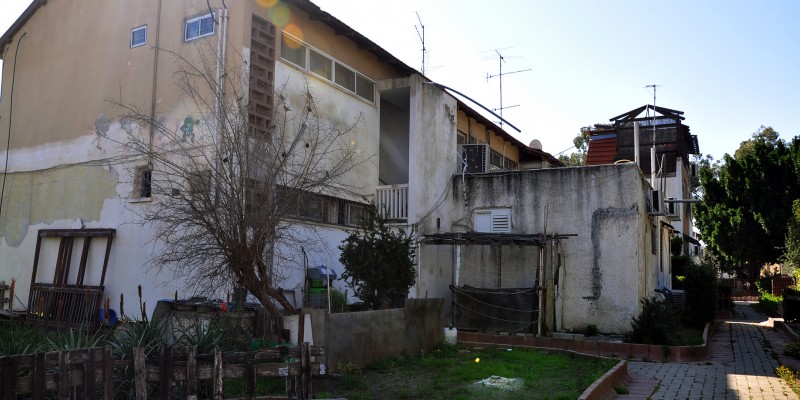2016 | Poverty in the Israeli Space
This study seeks to research renewed efforts in impoverished neighborhoods by building on the urban renewal project known as “Shikum Schunot,” by rethinking the purpose and the process of urban renewal, and by using graphic representations and planning methods. The project also seeks to integrate the historiographical and the contemporary aspects of the project in order to reveal the dilemmas that arise when neighborhoods are in a state of crisis. Through contributions from the fields of photography, social sciences, architecture and planning, it will be possible to illustrate the patterns of daily life in poorer neighborhoods, and, thereby, to elevate the issue of poverty in Israeli society and space.
Therefore, the study aims to define the relationship between poverty and space in an attempt to answer the questions: What is the relationship between poverty and space? Can we affect poverty by changing space?
This study examines these questions in a more targeted way through the case study of the neighborhood rehabilitation project, “Shikum Schunot:”
- Did the urban renewal project succeed in affecting poverty in the Israeli urban space, and, if so, how and why?
- At present, are there governmental or municipal policies for the physical or social improvement of impoverished neighborhoods?
- How should policies be designed to affect poverty in the Israeli urban space?
The purpose of this research initiative is to add to the documentation and analysis of these neighborhoods by collecting current and archival materials from a multidisciplinary perspective (e.g., economic, political science, architecture, film, sociology, art, etc.). As the first stage, the researchers selected four diverse neighborhoods in central Israel : Bnei Brak, a city predominately composed of Orthodox Jews; Ramle, a city composed of a mixed, Jewish and Arab population; Rehovot, an early settlement; and Umm al-Fahm, a city predominately composed of Arabs.
Case study | Qiryat Moshe
This study, conducted in Qiryat Moshe, a neighborhood of 9,000 inhabitants within the city of Rehovot, Israel, examines the relationship between future urban regeneration plans and inhabitants’ socioeconomic backgrounds. The primary goal of this work is to describe and question how policy makers, residents, and the media understand and perceive poverty, and how these understandings and conceptions lead to and affect urban regeneration initiatives. The plan for Qiryat Moshe will use demolition to redevelop the neighborhood, and, thereby, triple its total number of housing units, transform the neighborhood’s scale, and, perhaps, replace its negative popular image. This project assesses the motivation and the rationale behind this approach, asking whether it is a social policy or a market-based policy and, importantly, who stands to benefit the most from it.
A book summarizing this study’s conclusions is forthcoming. A Podcast Series, bringing the voices of politicians, planners, community activists and residents can be streamed here.
Support for this project was provided by Pais Council for the Arts and Culture, and LCUD, Tel Aviv University.
Project
Team
- PI: Tali Hatuka
- RAs: Einat Pragier, Yulia Furshik, Hadas Zur , Sunny Menozzi, Dr. Zvi Weinstein.



